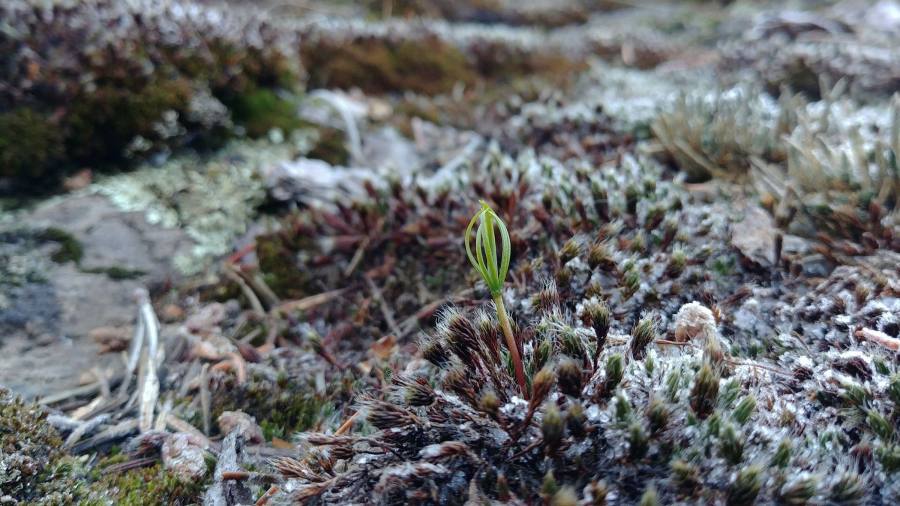
Finding the Mother Tree by Suzanne Simard — the wood wide web
As a child Suzanne Simard liked to eat earth, particularly the humus from the base of white barked beech that attracted worms who mixed the decomposing plant matter with underlying soil. “The more worms, the richer and tastier the humus,” she recalls.In the old growth forests of western Canada, she and her siblings foraged for mushrooms and huckleberries while her grandfather and uncles worked as loggers, selectively harvesting cedars, white pine, and Douglas fir. So few were taken that no one ever noticed the difference. The forest was in her blood; ageless, welcoming, beautiful and supportive of myriad life forms. When the time came to go to university, Simard — naturally — chose forestry.She was put to work on commercial forestry, the process of clear-cutting large areas of old growth forest and planting individual pine and birch seedlings in regimented rows. The thinking was that, without any competitors, the trees would grow faster, taller, and stronger. Instead, they were more frequently found to be vulnerable to disease and climatic stress than the older trees, who shared their patch of soil with other plants, mosses, firs and associated life forms. In particular, she studied newly planted Douglas firs, giant trees that provided valuable wood to the logging companies. One in ten of the new plants invariably got sick and died whenever nearby aspen, paper birch and cottonwood were removed.Simard became convinced that the explanation for this lay buried in the soil. She found that underground, trees and fungi form partnerships called mycorrhizas. Threadlike fungi envelop and fuse with tree roots, helping them extract water and nutrients, in exchange for the carbon-rich sugars that the trees make through photosynthesis. Her doctoral thesis investigated these links and became the basis of her life’s work.Experiments went wrong. Trees died. Once she spent well over an hour up a tree while a mother grizzly bear and her cubs circled belowIn Finding the Mother Tree, Simard runs through the triumphs and setbacks of her scientific journey, from earth-munching child back in the 1960s to professor of forest ecology at the University of British Columbia today (and the inspiration for the botanist heroine, of Richard Power’s novel The Overstory). To start with, she was dismissed: the world had a jaded view of people claiming that trees “could talk”. Besides, mixed farming had given way to seemingly more efficient system of monocrops — even if this needed ever increasing amounts of chemicals to sustain growth.In the male-dominated world of commercial logging the small blonde woman standing at the back arguing that clear-cutting was not just bad for the ecosystem but also less efficient got short shrift. Initially, she did not have enough data, but as the years went by and the experiments went on — the facts continued to bear out the hypothesis.It was tough work. Experiments went wrong. Trees died. Once she spent well over an hour up a tree while a mother grizzly bear and her cubs circled below. There were personal tragedies — the death of a much loved elder brother (memorialised by Simard in a garden that uses methods developed by native Americans to boost soil quality and ward off bugs and weeds) and the breakdown of her marriage to a husband yearning for a quieter life.Through it all, she keeps returning to the solace of the forest and the understanding that ecosystems are intimately bound up with ours: “they’re built on relationships. The stronger those are, the more resilient the system.” The forest, she writes, is like the internet, but instead of computers linked by wires and radio waves, the trees are connected by fungi. There are centres and satellites, with the oldest trees as the biggest communication hubs. The magazine Nature memorably dubbed it The Wood Wide Web. Once the underground pattern is understood, it is easy to see how seedlings can emerge in clear ground, she writes. “They have been nurtured underground by the other trees, waiting for their moment to start growing. They are being fed by the mother trees, the central hub that the saplings and the seedlings sprung from, with threads of different fungal species, of different colours and weights, linking them layer upon layer in a strong and complex web.” But when a forest is cleared and the mother trees are felled, “the forests literally lose their way.”Simard has since found that trees support each other in times of stress, drought, or disease. They can “communicate” needs and, in return, send supplies. Since Darwin, biologists have always maintained that survival is about the selfish gene. Simard’s work upends that. Trees are not solitary. They are not just tolerating each other’s presence, nor are they engaged in a war for light and nutriments. Instead, they make up a vast, ancient, and intricate society.This is not confined to forests. Recent research suggests that mycorrhizal networks flourish everywhere — from artic tundra to parries. These networks knit together our soil into living networks of unimaginable — and under-researched — complexity.Simard understands that her tendency to attribute feelings to the forest will make many wary of her mission. Personally, I think Finding the Mother Tree has come at a crucial moment. The recently published Dasgupta review, commissioned by the UK Treasury, says it is time we began to pay for nature and understand that its “services” — clean air and water, the beauty and abundance of nature, the fertility of the soil — are just as much assets as the products we create from those assets. With biodiversity on a knife edge, the need to appreciate and understand the complexity and brilliance of the natural world could not be more important. Finding the Mother Tree: Uncovering the Wisdom and Intelligence of the Forest, by Suzanne Simard, Allen Lane, RRP£20/Knopf, RRP$28.95, 368 pagesJoin our online book group on Facebook at FT Books Café
……Read full article on Financial Times
Nature
Comments
Leave a comment in Nestia App